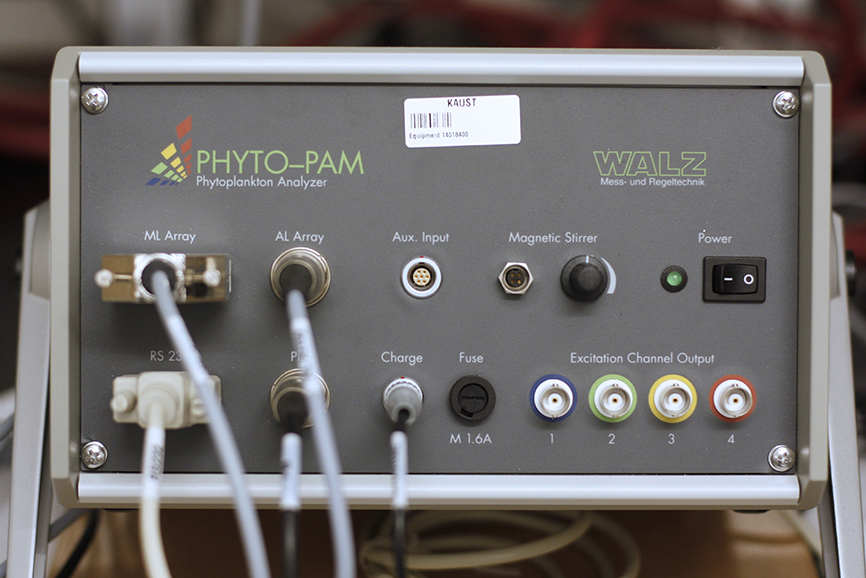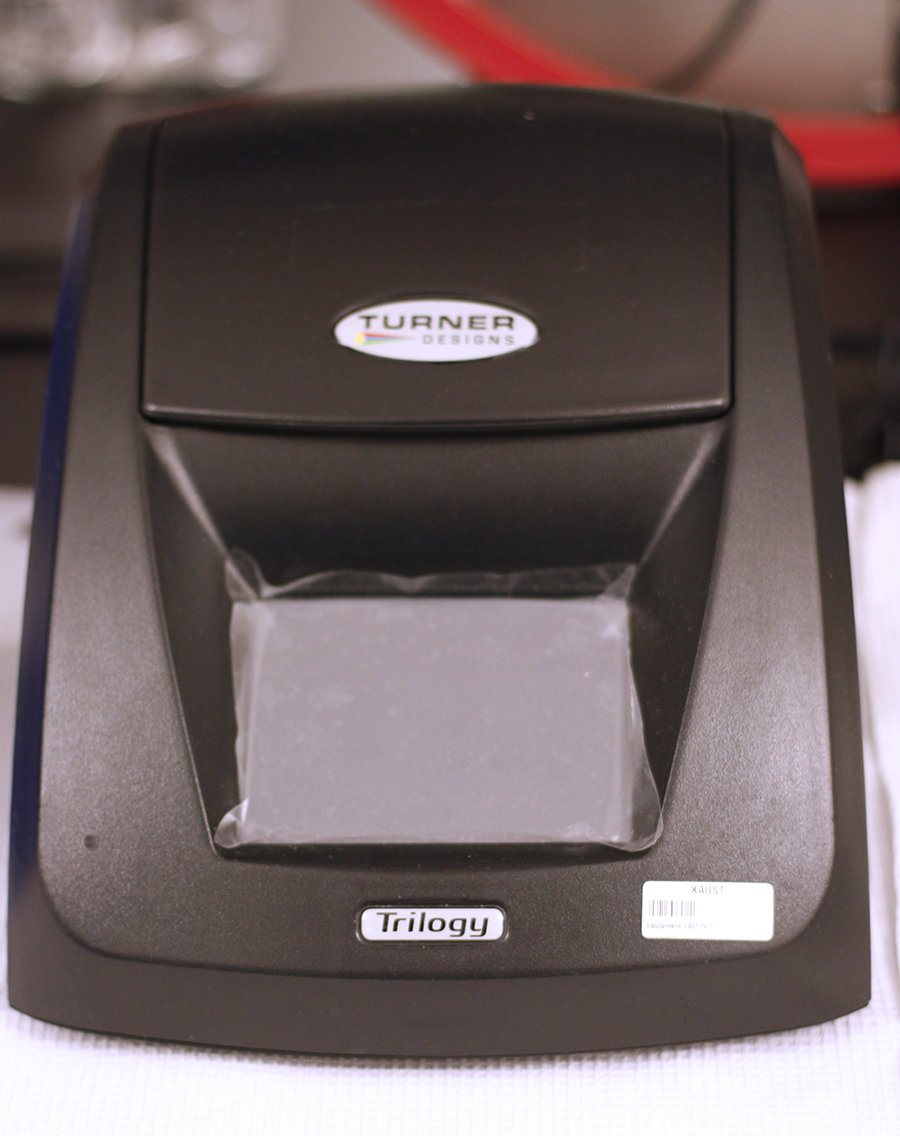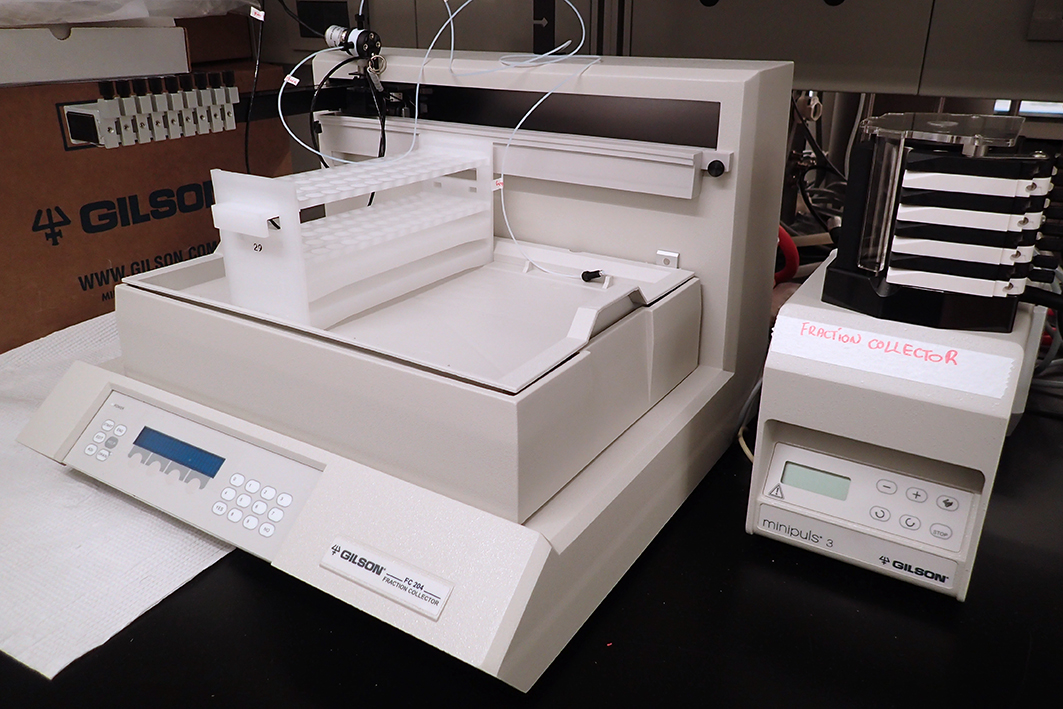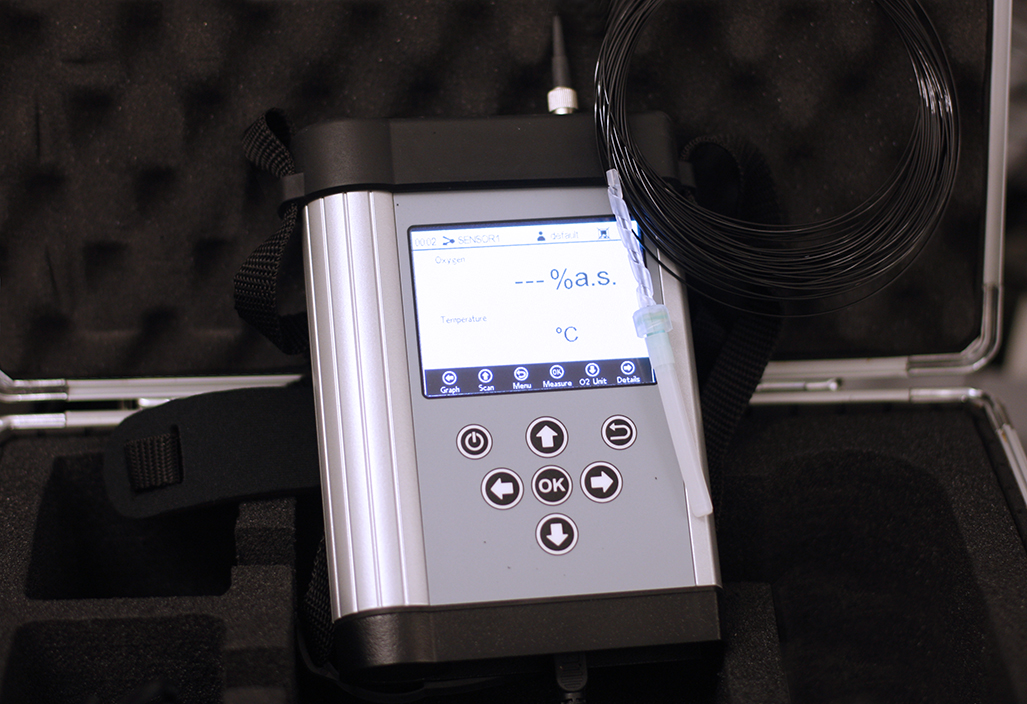Our group apply a variety of techniques to study the biogeochemistry of the ocean and the sensitivity/response of marine organisms to the environment. We use a variety of techniques based on fluorescence, spectrophotometry, chromatography, HPLC, mass spectroscopy, and sequencing, the lasts ones with the support of the Analytical Core Lab and the Bioscience Core Lab, both at KAUST.

PHYTO-PAM

Microscopy-PAM
The MICROSCOPY-PAM is an extremely sensitive non-imaging chlorophyll fluorometer specialized to measure smallest spots in microscopic specimen like tissue preparations or suspensions.
Essentially, the fluorometer consists of a modified epi-fluorescence microscope equipped with a modulated LED light source and a photomultiplier for detection of modulated chlorophyll fluorescence.
The MICROSCOPY-PAM system uses a Zeiss AxioScope.A1 epifluorescence microscope. In our equipment, the microscope is equipped with 3 wide-aperture Zeiss Fluar objective 20X, 40X and 100X magnification. Standard light source for fluorescence excitation is the blue Zeiss LED-Module 470 nm and also it has the UV LED-Module 365 nm.

TRILOGY Laboratory Fluorometer

LS55 Fluorometer

LAMBDA 1050 UV/Vis/NIR

FC204 - Fraction Collector

MICROX 4 - Oxygenmeter
The Microx 4 is a completely stand-alone, portable fiber optic oxygen meter. It can be used with non-invasive sensors & probes (1 mm fiber), and oxygen microsensors (200 µm fiber) in different designs. This oxygen meter is compatible with the wide range of sensors type PSt7 (detection limit 15 ppb, 0 – 100 % oxygen). With its integrated barcode reader the Microx 4 can easily recognize and assign calibration data to sensors in just one scan. The implemented sensor management system allows storing data of up to 100 sensors.

WICROX 4 - Oxygenmeter